Vaccines promised to bring the COVID-19 pandemic - or at least the soaring death rates - to an end.
And in many parts of the world, that is exactly what has happened. In countries such as the UK, rates of infection with COVID-19 have hit fresh highs over recent months, but death rates have remained far below the levels seen at the previous heights of the pandemic:
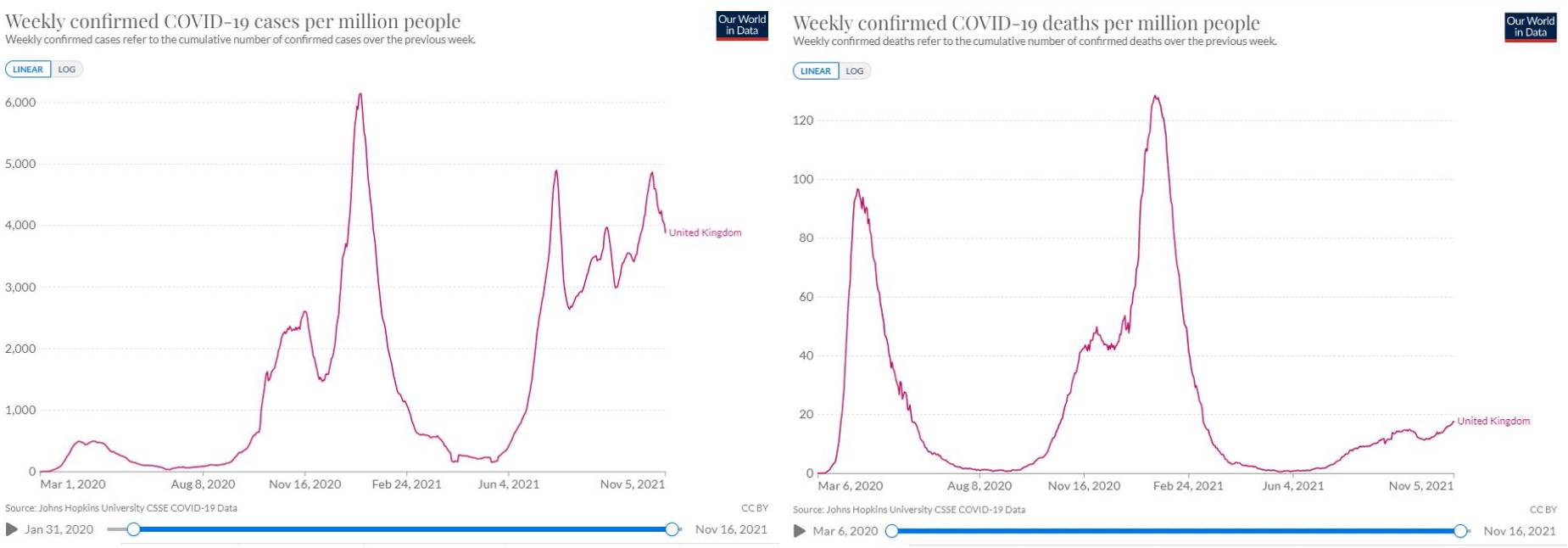
Credit: Our World in Data
Credit: Our World in Data
However, as you can see from the graph below, courtesy of John Hopkins University and Our World in Data, countries such as Bulgaria, Georgia, Latvia and Romania all currently have death rates higher than even those reached during the worst of the outbreak in the UK in January this year:
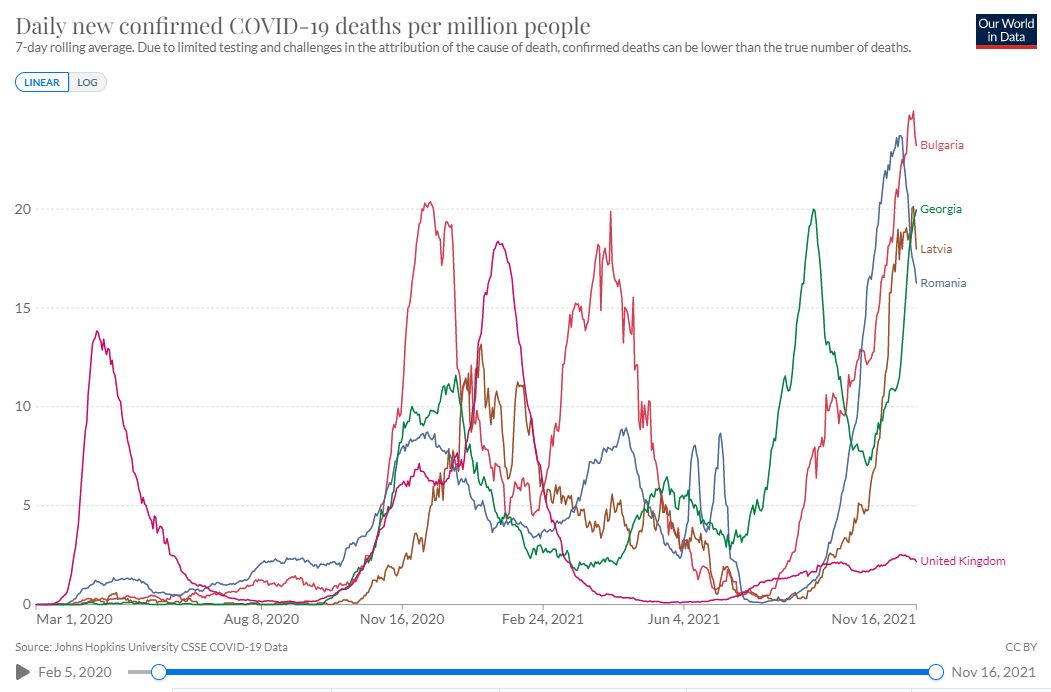
Credit: Our World in Data
Credit: Our World in Data
By contrast a succession of western European countries have death rates continuing at levels far below their previous peaks:
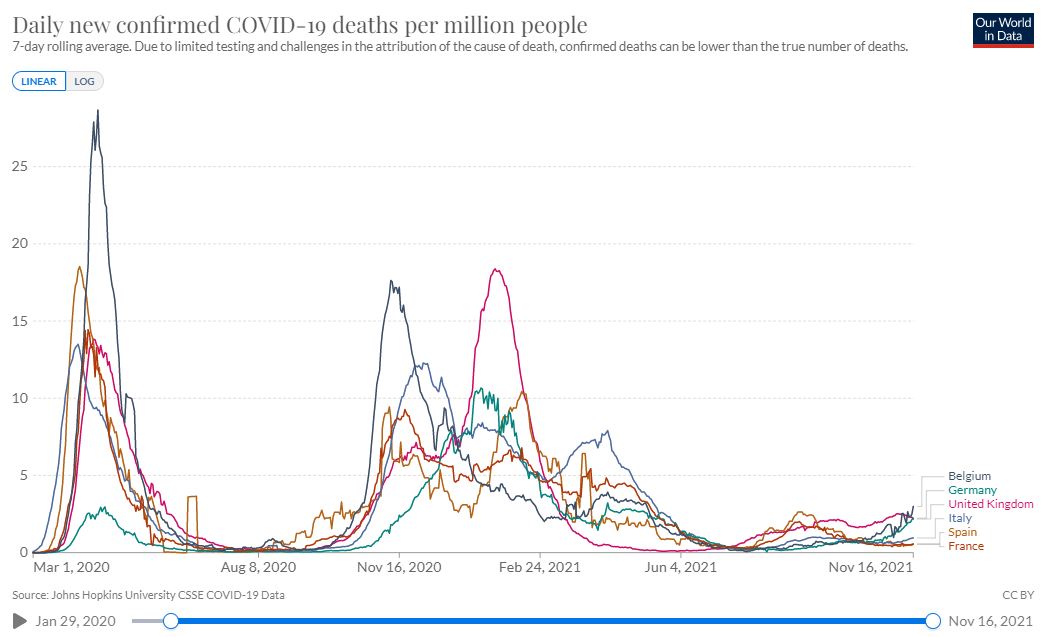
Credit: Our World in Data
Credit: Our World in Data
Do we know why the death rates are so high in some of the the eastern European countries?
There could of course be many reasons. One obvious answer is that they might have higher rates of infection than the western European countries.
Here's a graph showing the rate of confirmed COVID-19 cases for the western European countries. Note that the UK's rate has been the highest for the past few months, until being overtaken in the past few days by Belgium:
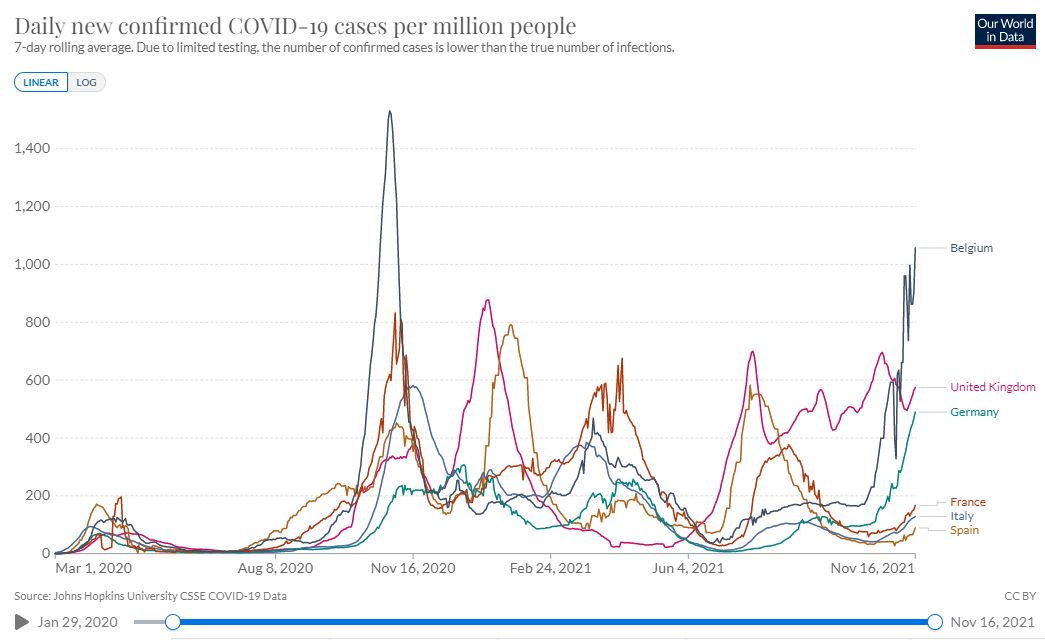
Credit: Our World in Data
Credit: Our World in Data
How does that compare with the eastern European countries? Well, the graph below shows their rate of infection, with the UK added in to allow a comparison. It shows that the UK rate of cases is similar to those of Bulgaria and Romania, with Latvia only overtaking the UK in the past few days. There tends to be lag of around two weeks between a rise in cases and a rise in deaths.
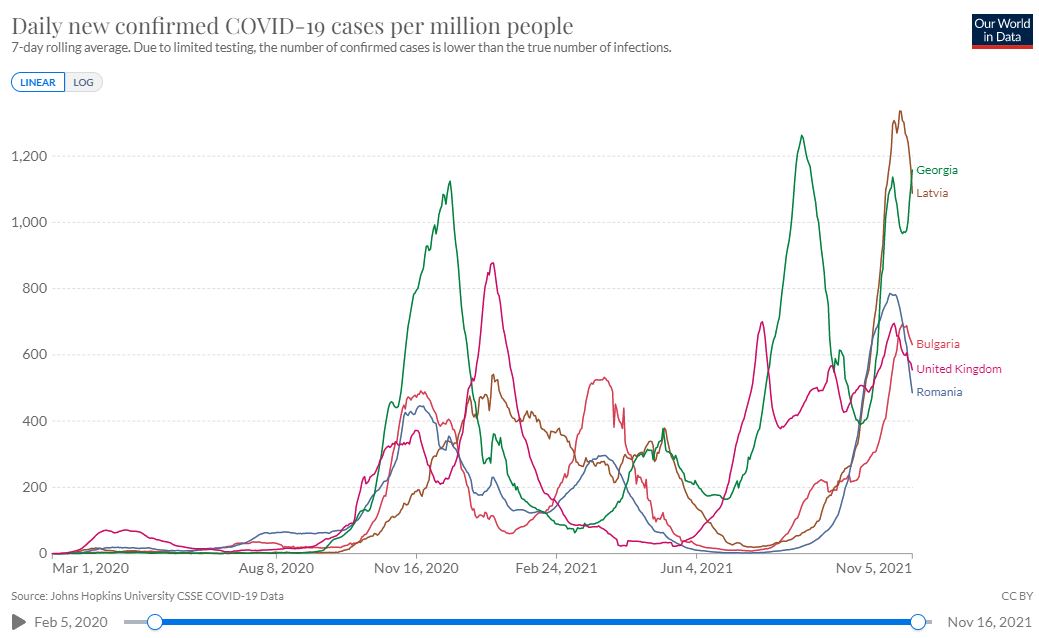
Credit: Our World in Data
Credit: Our World in Data
Another theory might be that not enough testing is happening in the badly-hit countries, but that is a theory hard to prove. And is it even relevant if we know the UK has had months of high cases rates without a soaring death rate?
So the obvious answer is that the proportion of people who have had a COVID-19 vaccine must be the reason for the divergent death stats.
READ MORE:
Anti-Asian hate speech 'surged online'
Zero Waste Challenge: Household rubbish
China urges EU to ratify trade deal
And it does turn out that the vaccination rates for the countries with soaring death rates are much lower than that of the UK:
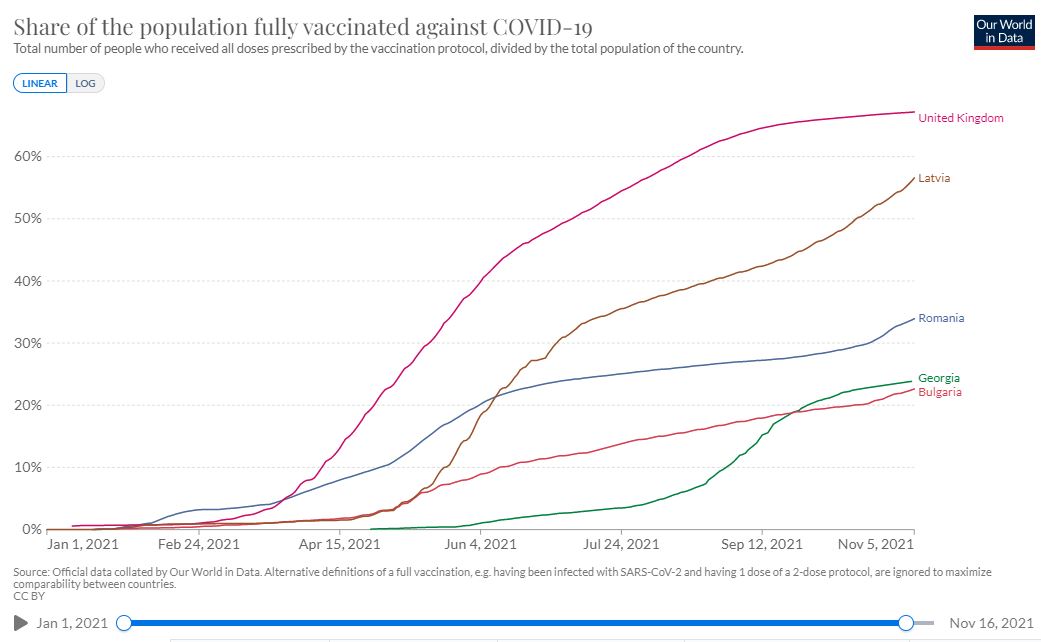
Credit: Our World in Data
Credit: Our World in Data
Compare those vaccination figures to the western European countries where there are high case rates but relatively low death rates:
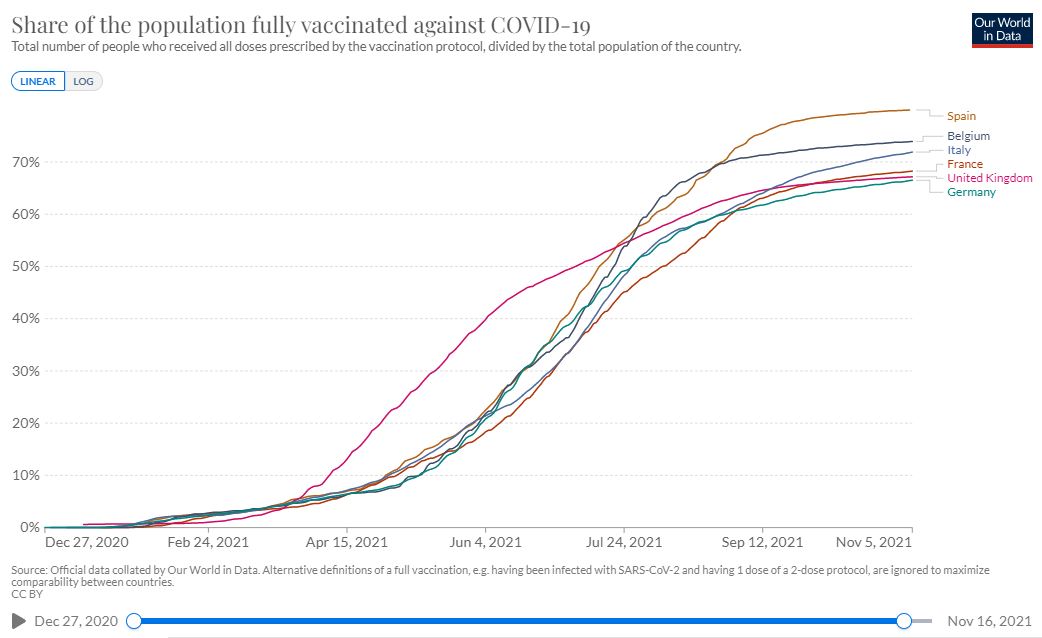
Credit: Our World in Data
Credit: Our World in Data
There seems to be a pretty clear correlation between high case rates, relatively low vaccination rates and higher death rates.
Of course there are other factors that may be having an impact, such as the general health of the population, the quality of treatment people get from their health service and whether or not the vaccinations are going to the people most at risk of hospitalization or death from COVID-19.
So are COVID-19 vaccinations really that important?
The short answer is yes. The trials for all the vaccines approved by the World Health Organization were focused on their ability to stop people being hospitalized or dying from COVID-19. It was hoped that the vaccines would also stop people contracting and spreading COVID-19, but that was never the yardstick on which the vaccines were judged.

A medic tends to COVID-19 patients at the ICU of Pirogov hospital in Sofia, Bulgaria. /Reuters
A medic tends to COVID-19 patients at the ICU of Pirogov hospital in Sofia, Bulgaria. /Reuters
And we have now got very nearly a year's worth of evidence on how the vaccines are working the real world. And they are doing at least as well as they did in the trials.
The latest figures released in the UK show that the Pfizer-BioNTech vaccine has proved to reduce the chance of dying after catching COVID-19 by 90 to 99 percent.
The AstraZeneca vaccine cuts the chance of death for those who get COVID-19 by an almost equally impressive 90 to 95 percent.
With such impressively high effectiveness figures, it means that a 10 percent difference in a country's vaccination rate can make a big difference to the death rates - if lots of people are getting COVID-19.
The solution to current high death rates seems to be clear - either bring in measures to curb the spread of the disease, or ramp up vaccination rates.
Further reading:
Do we know how many people in the UK have had COVID-19 twice?
Can you 'party away' the benefits of vaccination?
Why vaccines are working even if some people still get COVID-19

